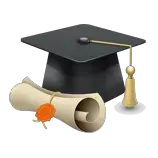Qualities that Set Me Apart
With a unique combination of experiences and achievements, I stand out among my peers. Throughout my academic journey, I have consistently demonstrated leadership skills that have propelled me to take on various roles of responsibility. Whether it was leading a team in a group project or organizing events as part of a club, I have always been eager to step up and guide others towards success. My ability to motivate and inspire my peers has not only garnered recognition but also fostered a collaborative and supportive environment.
Academic excellence and a strong work ethic have always been my top priorities. I believe in putting in the time and effort required to excel in my studies, and this dedication has yielded outstanding results. Through meticulous planning, effective time management, and a relentless pursuit of knowledge, I have consistently achieved high grades and earned academic accolades. Furthermore, my perseverance and determination have allowed me to handle challenging coursework, maintaining a positive attitude even in the face of adversity. These qualities have not only enabled me to thrive academically but have also equipped me with the skills necessary for success in any endeavor.
My Unique Experiences and Achievements
Throughout my journey, I have been fortunate enough to accumulate a wide range of unique experiences and achievements. From participating in international debate competitions to leading a team of volunteers for a local charity, each endeavor has contributed to shaping the person I am today. One of my standout experiences was representing my school at the Model United Nations conference, where I had the opportunity to engage in diplomatic negotiations and develop diplomatic skills. This experience not only honed my public speaking abilities but also deepened my understanding of global affairs and the importance of effective communication in resolving complex issues.
Another significant achievement of mine was being selected as the captain of my school’s basketball team. As the team leader, I learned firsthand the value of teamwork, discipline, and perseverance. Through countless hours of practice and hard work, we achieved remarkable success, including winning several regional championships. This achievement not only highlighted my ability to lead and inspire others but also improved my problem-solving skills and ability to remain composed under pressure. It reinforced my belief in the power of determination and the importance of setting and striving for ambitious goals.
Demonstrated Leadership Skills
Having the ability to effectively lead a team or organization is a valuable skill that sets individuals apart. I have personally had numerous opportunities to showcase my leadership skills and have consistently risen to the occasion. Whether it was leading a group project in school or taking charge of organizing a community event, I always strive to lead by example, inspiring and motivating others to achieve their best.
One notable example of my demonstrated leadership skills was during my time as the captain of my high school basketball team. I was responsible for not only guiding and encouraging my teammates on the court but also for coordinating practices, developing game strategies, and communicating with our coach. Through my leadership, we were able to build a cohesive and supportive team environment, resulting in improved performance and a united sense of purpose. It was an experience that truly highlighted my ability to lead, inspire, and effectively collaborate with others towards a common goal.
Academic Excellence and Strong Work Ethic
Throughout my academic journey, I have consistently demonstrated a commitment to excellence and a strong work ethic. From a young age, I recognized the value of education and the importance of putting in the effort to achieve success. This mindset has driven me to consistently pursue academic excellence in all areas of my studies.
With a thirst for knowledge, I strive to go above and beyond in my coursework, seeking out additional resources and seeking clarification on challenging topics. I am not satisfied with merely meeting the minimum requirements; instead, I push myself to constantly improve and exceed expectations. This determination to excel has been reflected in my consistently high grades and recognition for academic achievement.
Furthermore, my strong work ethic extends beyond the classroom. I believe that success in any endeavor requires dedication, discipline, and a willingness to put in the necessary effort. Whether it is completing projects, participating in group discussions, or taking on leadership roles within student organizations, I approach every task with a sense of purpose and a commitment to giving my best.
Through my academic excellence and strong work ethic, I have developed invaluable skills such as time management, attention to detail, and the ability to thrive under pressure. These attributes will undoubtedly serve me well in my future endeavors, enabling me to tackle challenges head-on and achieve my goals.
Passion for Personal and Professional Development
As an individual driven by personal and professional growth, I consistently seek out opportunities to enhance my skills and knowledge. Whether it be through attending workshops, pursuing additional certifications, or partnering with mentors, I am deeply committed to expanding my expertise in my chosen field. By actively engaging in continuous learning and self-improvement, I aim to stay updated with the latest industry trends and best practices, enabling me to excel in my career and make a meaningful impact.
In my quest for personal and professional development, I am always willing to step outside of my comfort zone and take on new challenges. I firmly believe that growth happens when we push ourselves beyond what we think we are capable of. By embracing unfamiliar tasks and responsibilities, I have not only acquired new skills but also developed a greater sense of adaptability and resilience. Ongoing development allows me to stay ahead of the curve, constantly evolving to meet the demands of an ever-changing world. With each opportunity for growth that I encounter, I am compelled to seize it wholeheartedly, fueling my passion for personal and professional development even further.
Commitment to Community Service and Volunteering
A passion for community service and volunteering has been a consistent thread throughout my life, shaping my values and guiding my actions. From a young age, I recognized the importance of giving back and making a positive impact in the lives of others. This led me to actively seek out opportunities to contribute to my community, whether it was participating in local clean-up initiatives, volunteering at shelters, or organizing fundraisers for charitable organizations. My commitment to community service stems from a genuine desire to make a difference and create a more inclusive and compassionate society. It is ingrained in my character, and I am dedicated to continuing this work and inspiring others to do the same.
Through my various volunteering experiences, I have had the privilege of working with diverse groups of people and witnessing the power of collective action. These experiences have been transformative, allowing me to connect with individuals from all walks of life and gain a deeper understanding of the challenges they face. Whether it is mentoring at-risk youth, assisting refugees in their resettlement process, or advocating for the rights of marginalized communities, I am fueled by a sense of empathy and a desire to be of service. I believe that by investing my time and efforts into community service, I can contribute to positive social change and create a more inclusive and equitable society for all.
Overcoming Challenges and Adversity
When faced with challenges and adversity, I have consistently shown resilience and determination. Throughout my life, I have encountered various obstacles that could have easily discouraged me from pursuing my goals. However, rather than giving up, I have always chosen to view these challenges as opportunities for growth and personal development. I firmly believe that it is in times of adversity that we discover our true strengths and capabilities. Whether it be overcoming a difficult personal situation or navigating through academic hurdles, I have consistently demonstrated the ability to adapt, learn, and rise above adversity.
One significant challenge that I faced was during my sophomore year of college, when I was diagnosed with a chronic illness. This unexpected health issue not only required extensive medical treatments but also posed significant limitations on my daily activities. Despite the physical and emotional toll it took on me, I refused to let it define me or hold me back from pursuing my education and personal aspirations. With the support of my family, friends, and healthcare providers, I developed effective coping strategies and learned to prioritize my health while still maintaining a high level of academic excellence. This experience not only strengthened my resilience but also taught me the importance of self-care and perseverance.
Clear and Ambitious Goals for the Future
As I look towards the future, I am driven by my clear and ambitious goals. One of my primary goals is to pursue a successful career in the field of medicine. With a passion for helping others and a deep curiosity about the human body, I am determined to become a doctor who can make a positive impact on people’s lives. I envision myself working in a hospital, diagnosing and treating patients, and constantly staying updated on the latest advancements in medical science. In addition to that, I also aspire to contribute to medical research, seeking new breakthroughs and innovative solutions to improve healthcare outcomes. This goal not only aligns with my personal interests but also reflects my desire to serve the community and make a difference in the lives of others.
Another important goal of mine is to cultivate a global perspective and contribute to the field of international relations. With the increasing interconnectedness of our world, I am motivated to understand different cultures and work towards promoting peace and cooperation among nations. I envision myself working as a diplomat or international mediator, facilitating dialogue and negotiations to resolve conflicts and foster mutual understanding. Additionally, I aim to engage in research and policy-making, contributing to initiatives that address global challenges such as climate change, poverty, and human rights violations. By combining my passion for diplomacy and my desire to create a more just and equal world, I am determined to make a meaningful impact in the field of international relations.
Determination and Perseverance
In the face of challenges and obstacles, determination and perseverance have been essential attributes that have guided my journey towards success. With unwavering determination, I have pushed through difficult circumstances and maintained a steadfast focus on my goals. Despite setbacks and moments of doubt, I have consistently exhibited the resilience needed to overcome hurdles and keep moving forward.
Through my commitment to perseverance, I have consistently demonstrated my ability to stay dedicated even in the face of adversity. Whether it was the long hours spent studying late into the night or the relentless pursuit of a solution to a problem, my perseverance has always been a driving force behind my achievements. I have learned to embrace challenges as opportunities for growth and have developed the mental fortitude to never give up, no matter how difficult the situation may be. My unwavering determination and perseverance have not only enabled me to overcome obstacles but also instilled in me a deep sense of resilience and a willingness to face any challenge head-on. The lessons learned through these experiences have shaped me into the determined and tenacious individual that I am today
Financial Need and Desire for Equal Opportunities
One of the key aspects of my journey has been the recognition of my financial need. Growing up in a low-income household, I have faced numerous financial challenges that have impacted my educational opportunities. However, this has only fueled my desire for equal opportunities, as I firmly believe that everyone, regardless of their economic background, should have access to quality education and the chance to succeed.
Moreover, my financial need has served as a constant reminder of the importance of resilience and determination. I have learned to make the most out of limited resources, constantly seeking out scholarships and financial aid opportunities to help fund my education. Despite the financial hardships I have faced, I have remained steadfast in my commitment to achieving my goals and creating a better future for myself. My financial need has truly shaped my perspective and highlighted the significance of equal opportunities for all individuals, regardless of their socioeconomic status.






